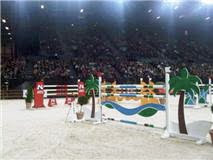Whilst the concept of auctions can be traced back to 500B.C., art auctions appeared during the 17th Century following the french revolution as buyers and sellers met on a daily basis in taverns to trade. They are similarly executed today, and trade is conducted through a process of bidding; producing a quantitative value for an item of previously undetermined price.
Over the last decade, auction houses such as Christie's or Sotheby's have been at the height of much speculation and contemplation. Their promotion of trade is deemed proactive and favorable to the art market as it increases awareness and popularity of artists, and achieves record-breaking bids.
It is thus intriguing that the latter encapsulate only 1/3 of all art sales; transactions are generally of a private nature through dealers and galleries (Brewster 2006); a process that emerged in the 17th Century. Velthuis (2004) explains that within the primary market, artists are habitually represented on a commission basis, although on occasion the galleries might choose to purchase the works for resale at a profit.
Auctions have furthermore been viewed by critics as negative to the valuations of artists. From their viewpoint, the art market is very much a "sellers' market", in so much that the gallery-owners and dealers exert most control (Lewis 2004:1-8). According to Art Review (November 2006), galleries are widely considered the muscle of the art world. "With the market for art works constantly on the rise, the commercial gallerist takes the strange thing called art and converts it into cold, hard cash, and loads of it..." (Art Review 2006:59).
The "power" in question relates to the far exceeding demand versus supply; there are waiting lists for paintings that don't exist (Lewis 2004:1-8). "Galleries don't have to sell the art; they have to decide who not to sell it to" (Lewis 2004:4). What this theory emphasizes is that the value of a piece and the regard of the artist will increase depending on who buys it i.e. if it is part of the "right" collection; success is the result of skill-full reputation building (Art Review 2006:56-120).
Under those terms, the value will decrease should the piece lose its rarity; if it is bought and then immediately auctioned off at a profit the effects are minimal, however occurring on a larger scale this could cause an immediate downturn for the artist, should the paintings flood the market (Lewis 2004:1-8).




































No comments:
Post a Comment